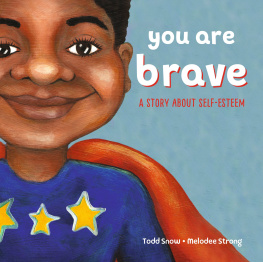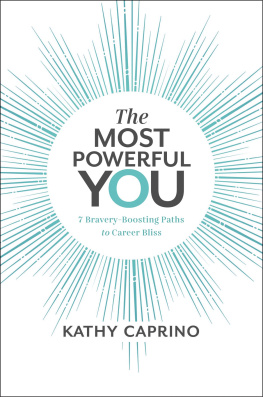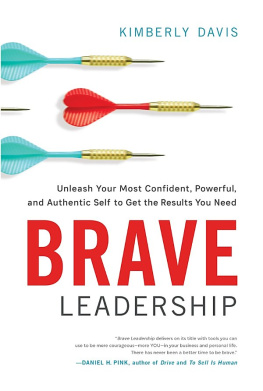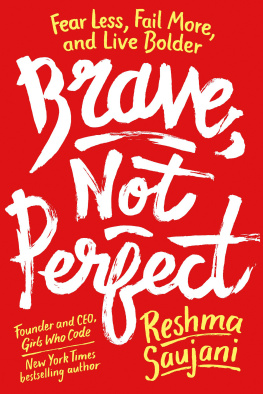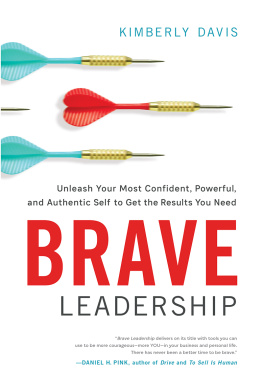Nicole M. Bianchi
Copyright 2021 Nicole M. Bianchi
the love of my life and best friend, who told me if this book is any good, they will turn it into a movie.
for living life out loud with every small brave move you make. You are my greatest masterpiece.
Pay attention to your passions. They are the key to starting and finishing the book you are meant to write.
INTRODUCTION
Lets roll!
Those were the last audible words of Todd Beamer, a passenger on the hijacked United Airlines Flight 93. Todd discussed their options with other passengers and flight attendants, and then they voted on a course of action. Ultimately, they decided to storm the cockpit and take over the plane. The group was planning to jump on the hijackers and fly the plane into the ground before the hijackers could follow through with their plan. First, Todd Beamer recited the Lords Prayer and Psalm 23 and prompted others to join in. Then he said, Are you ready? Okay. Lets roll.
In a November 8, 2001 address from the World Congress Center in Atlanta, Georgia, George W. Bush invoked Beamers words: Some of our greatest moments have been acts of courage for which no one could have been prepared.
This kind of dramatic act, like attacking hijackers, is what most people think of when they think of bravery.
Bravery with a capital B, and dramatic acts like this one, flow out of the practice of making brave choices in daily life and practicing small bravery.
When we think of bravery, we cant help but picture someone with a cape coming to save the day. We think of brave feats being performed by those in the military, firefighters, police officers, or doctors to resolve a crisis. The idea of being able to tap into this type of immeasurable courage is foreign to most of us, and these generalized beliefs about braveryBraveryismsset unrealistic expectations. When the crisis comes, these heroes are ready to stand up and confront the situation. We simply cant relate since we arent putting our lives on the line, nor are we superheroes.
What kind of bravery is there for the rest of us?
When we think of bravery, we often think of heroism first. Its a grandiose idea made for people who, frankly, are not normal like the rest of us. Its unlikely (but possible) that you will do some brave act that miraculously gets filmed for TV and gets shared by millions of people on social media. And thats okay.
Tim Denning, writer for CNBC and Business Insider.
Bravery isnt something you do once in a lifetime. Its something you have to practice, all of the time!
Let me tell you another story about these two kinds of bravery in my own life. In November of 2012, my mom shared her devastating diagnosis of cancer, which had already spread to the rest of her body. She had late stage IV lung cancer. There was no cure. Her doctor estimated she only had a few months to live.
I had to be strong and brave. I had to get in and engage with her and the team of doctors. I had to be able to listen, inquire, and challenge. I had to help her build a game plan with the most sustainable outcome. I couldnt acknowledge the possibility of losing my mom because we were too busy fighting the cancer. My mom turned a diagnosis of months into almost two years. But as cancer often does, it took over. The time had come to put down my armor, our We Will Fight mantra.
It finally hit me when we transitioned my mom to hospice care. The fight was over, and the true bravest moments were actually in front of me. I had to transition from warrior mode to being an end-of-life caregiver. For twenty-two days in hospice at her home, she would teach me about bravery. Theres no single dramatic act when caring for someone who is terminally ill; theres just daily bravery required to keep moving forward, which is what bravery requires of most peoplesmall brave moves every day.
In the work I do with my clients, if I were to boil down the challenges that they face into one common element, it would be bravery or the lack of. Leadership development has been primarily focused on acquiring tools, like how to give feedback, how to tell a story, or how to give a better presentation. Those are important tools, but theyre not enough. The framework or tool is useless if you arent brave enough to have the conversation.
We have to shift the spotlight from just leading to becoming a braver version of our leadership selves! McKinsey & Company defines leadership as a set of behaviors leaders exercise to influence organizational members to achieve a higher alignment on the direction the organization is taking, to achieve a better execution of the strategy, and for the organization to continuously renew itself.
Bravery is a skill. Leadership is an action. Without the skill, it can be difficult to take action. Brave leadership fundamentally involves being true to yourself and others, at the same time as honestly and transparently engaging with the external environment. It is about bravely leading from the inside out, an authentic and emotionally attuned engagement with self, and courageously letting the outside in. When pressures grow, difficulties arise. Multiple external drivers create complex challenges for organizations, and it is tempting for leaders to play it safe in the land of instruction, direction, and top-down strategy.
You can do the basics of leadership, but being the best leader requires bravery.
Bravery + Leadership creates a competitive advantage for leaders and it takes small brave moves to get there.
If you want to learn more about what it takes to live a life of small brave moves, bravery with a small b, then you are in the right place! This book is not designed to make you some iconic hero; you dont need a cape to be a braver leader. This book is designed to teach you the mindsets, behaviors, and habits that empower and enable you to be your bravest.
We all have a choice; we can just lead or we can lead as our bravest selves. What if we shifted the spotlight from just leading to being a braver leader?
About two years ago I was playing around with this notion and coined the phrase Bravership. With Bravery + Leadership = Bravership, you can grow influence, accomplish more, and fear less.

We are going to explore how to build the skill of bravery: how to be bold with your boss, peers, and employees; practice and encourage open communication; and build a network that helps you make the brave choices. I dont promise once you master the books content you will live every day with less fear or have it right every time. I do promise you will know research-supported strategies to build braver mindsets, behaviors, and habits.
The moves you make will compound significantly over time. You will need to do the hard work. You will need to get your butterflies in formation and practice these moves over and over. You will fail. You will get back up, and you will try again. No book or person (not even your loved ones) can make you excel, only you can.


